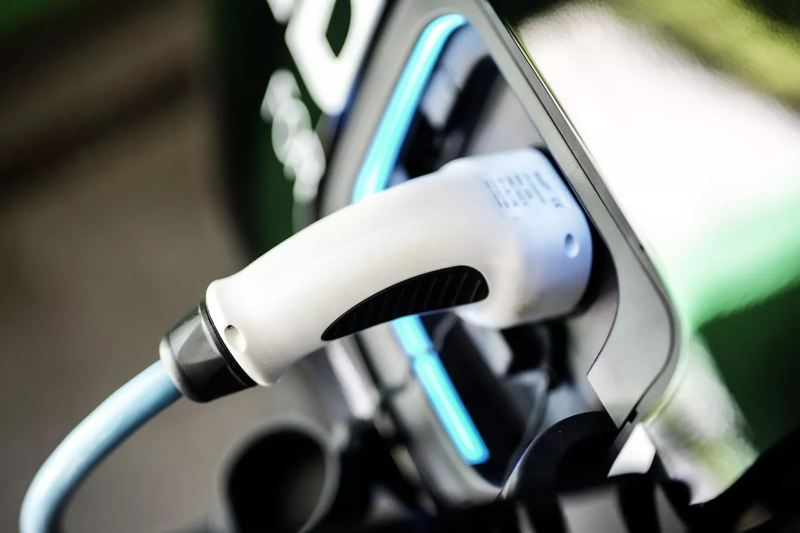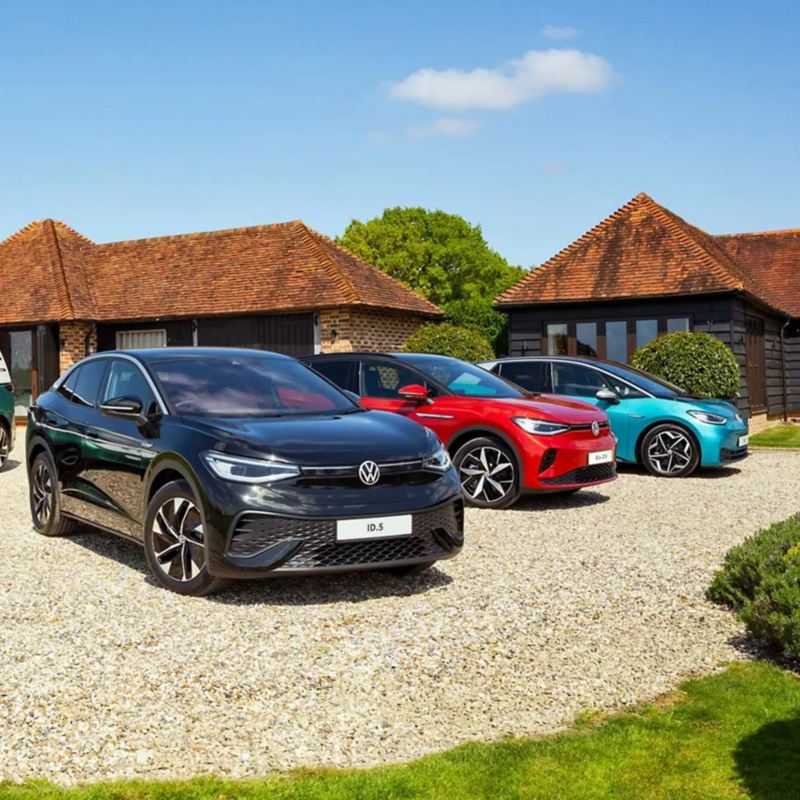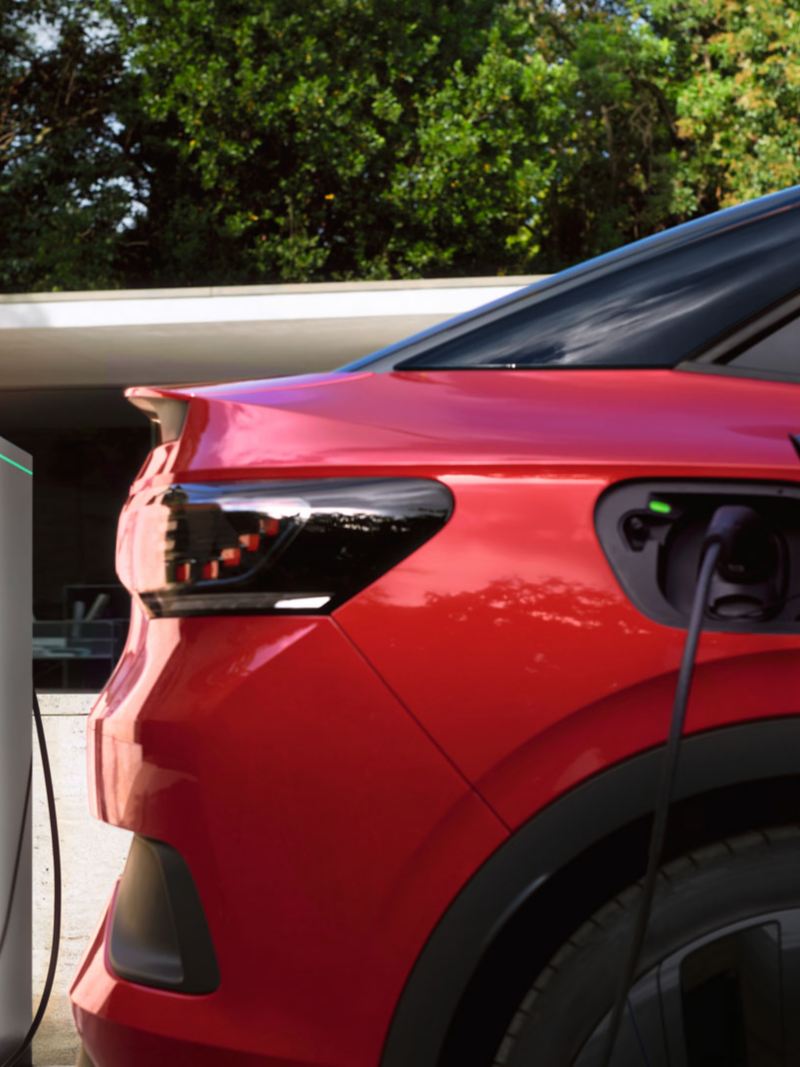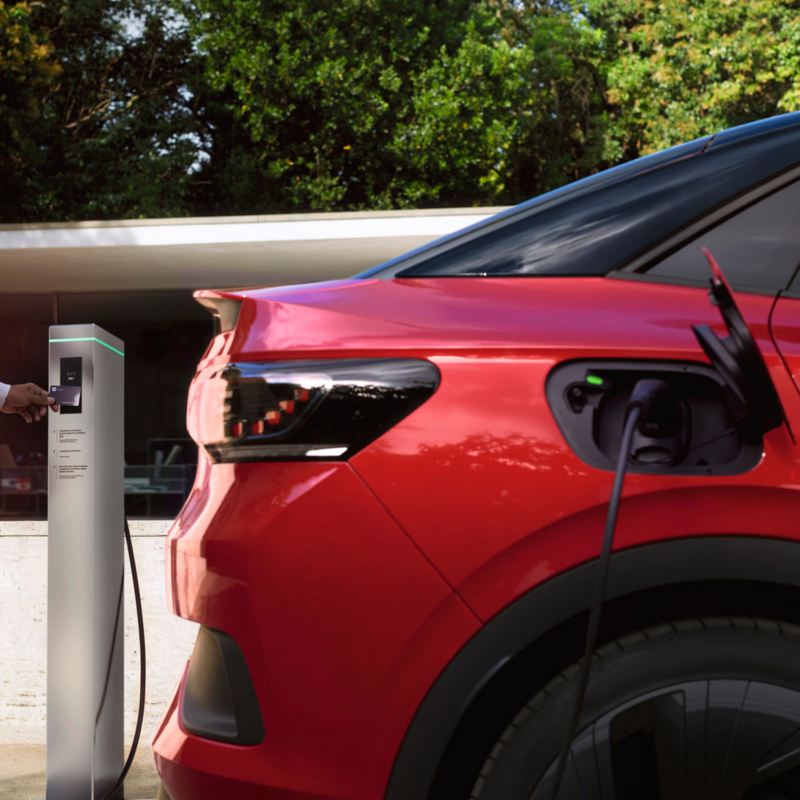Electric or hybrid vehicle? The key features of each type of drive
Alternative drives are becoming very popular. Eco-awareness is just as important as tax benefits, driving bans, and rising fuel prices. So, it is no wonder that electric cars and hybrid vehicles are taking over the roads. But what are the advantages of each type of drive? Here's an overview.
Find out here about the different types of electric car:
- Pure electric cars are powered entirely by electricity, while hybrid cars combine different drive technologies.
- Hybrid cars have a higher overall range, whereas pure electric cars have a significantly higher electric range.
- Pure unadulterated fun: electric cars accelerate almost silently and dynamically with full torque from a standing start.
- Hybrid cars are locally CO2-free when driven in pure electric mode.
From mild to full hybrid: what are the differences?
Their names say it all: the drive is the key difference between an electric car and a hybrid vehicle. Electric cars are powered solely by electricity. Hybrid cars, by contrast, are a combination of different drive technologies. This means that they generally have an electric motor, including a battery, and a conventional combustion engine. In most cases, this latter engine is petrol-driven, but diesel or LPG cars can also have an electric motor.
Further differentiation is also made between the following versions of hybrid cars: Micro hybrid
The logical next step towards even greater connectivity is now to inform the traffic behind as early as possible of the accident location, as well as make an emergency call. To do this, the vehicle would have to notify the other cars of the danger by mobile communications signal. This exemplary scenario of connected mobility is a reality today and just an insight into the year 2050: so-called Car2X communication enables cars to share traffic-related information in their surroundings with other vehicles (and the transport infrastructure).
ID. models and the Volkswagen Golf 8, for example, communicate with each other over a range of 800 metres and in milliseconds. Thanks to their numerous sensors, electric cars can detect potential dangers at an early stage – and automatically warn other nearby vehicles by a Wi-Fi radio signal. Anticipatory driving has a whole new meaning thanks to the digital transfer of data.
Mild hybrid
A conventional engine is supported by an electric motor and a battery when driving. This means that a mild hybrid uses less fuel than a car driven only by a combustion engine. As with the micro-hybrid, energy is also generated by regenerative braking.
Full hybrid
Both the electric motor and the combustion engine are capable of driving the vehicle independently. There is no need to charge a full hybrid, though, as it also draws the power it needs from braking. Hybrid cars are particularly well suited to urban traffic where cars need to brake more often. They generally only use the electric motor for the energy required to start the car.
Plug-in hybrid
Just like an electric car, their batteries can be charged at a charging station or plug socket, which benefits their range. The battery can also store energy generated by braking, like other hybrid drives. A plug-in hybrid can also drive purely electrically. When the battery is depleted, the combustion engine steps in, and you can continue your journey seamlessly.

Hybrid cars for overall range, electric cars to prioritise electric range
Thanks to the combination of combustion engine and electric motor, plug-in hybrids, and similar cars come out on top when it comes to overall range. Depending on the model, size of tank, and battery power, their range could run to four figures. However, their electric range is lower than that of a purely electric vehicle. By way of comparison, the VW ID.3 with a 45 kWh battery () has a range of up to 350 kilometres2, while the ID.3 with its 77 kWh battery (ID3: combined power consumption: 14.1–13.5 kWh/100 km (NEDC); combined CO₂ emissions: 0 g/km; efficiency class A+) can even travel up to 549 kilometres purely electrically3. The purely electric range of the Tiguan eHybrid (fuel consumption in l/100 km: combined 1.6; power consumption in kWh/100 km: combined 13.8; CO₂ emissions in g/km: combined 35; efficiency class: A+) is up to 50 kilometres4 – which is, of course, lower, but is still sufficient for almost all journeys in day-to-day life. A full hybrid can also drive purely electrically in busy city traffic, although this is only possible over relatively short distances.
Consumption and emissions: economical and environmentally-aware driving
Pure electric cars run exclusively on electricity, making them locally CO2-free. You can be even more environmentally aware by charging your electric car with green electricity. You can charge your vehicle at a public charging station and home – plugged into a “normal” socket or at a wallbox you have had installed. The latter version is much faster at 11 kW.
In pure electric driving mode, hybrid cars do not emit any CO2 emissions either, making them CO2-free to drive. The electric motor usually provides the drive over shorter distances or supports the combustion engine used over longer distances. A control system decides which drive is used and when depending on the respective driving situation. It coordinates the engine and motor perfectly. It is even possible to choose the mode yourself in some models: for example, the Touareg R eHybrid (fuel consumption in l/100 km: combined 3.0–2.8; power consumption in kWh/100 km: combined 19.9–19.5; carbon emissions in g/km: combined 69-63; efficiency class: A+) starts up in electric mode, when only the electric motor is running. Once you have activated hybrid mode using the driving profile selection, you combine both combustion engine and electric motor. Thanks to their electric motor, plug-in hybrids emit significantly fewer pollutants and use less fuel than a diesel or petrol car.
Pure driving enjoyment: dynamic and powerful
Alternative drives and future-centric concepts are important, there’s no doubt about it! But it’s all the better if you do not have to forego the fun of driving. So, what does this look like when it comes to hybrid and electric cars? They accelerate almost silently, dynamically and with full torque from a standing start. One thing is certain – you are guaranteed to feel the thrill the first time you sit in an electric car, press lightly on the accelerator, and feel its sporty acceleration! The new ID.4 GTX (power consumption in kWh/100 km: combined 18.2–16.3; carbon emissions in g/km: 0; efficiency class: A+) accelerates from 0 to 100 km/h in just 6.2 seconds, with no gear shifts or delay.
But hybrid vehicles are fun, too. Over short to medium distances, full hybrids and plug-in hybrids drive just like a pure electric car – and that includes the fun of an electric car. At all other times, hybrids have the power of two engines, giving them powerful acceleration, despite carrying a little more weight. Even at higher speeds.

In conclusion: your drive needs to fit in with your life.
Both hybrids and electric cars have their benefits. Your needs and habits will be the main factor in finding the drive type that is your best fit. Do you mainly drive in town? Do you mainly drive short distances, or do you also frequently make longer trips? Is a purely electric drive more important to you, or do you still want to be able to fill up your tank? All these aspects play a key role in the decision-making process about your future vehicle.


